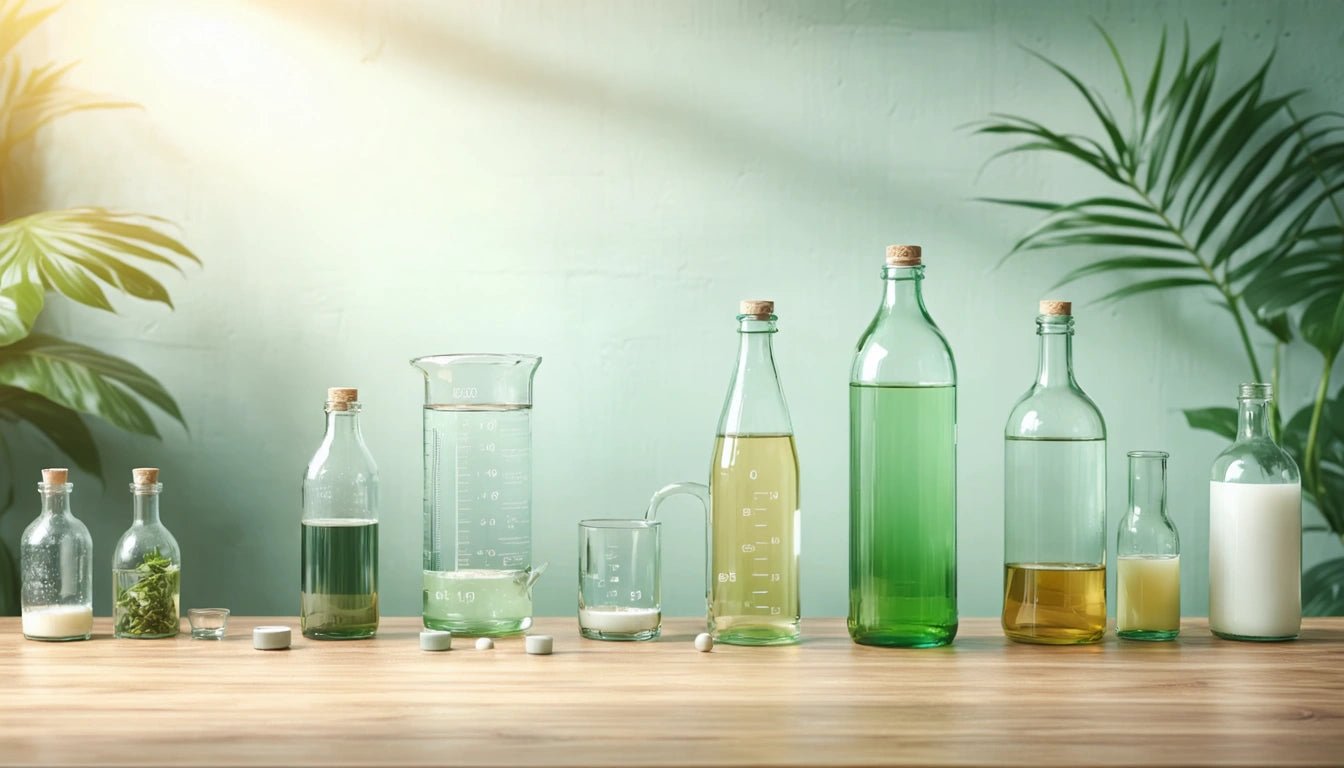Table of Contents
Understanding Volume: Converting 1.75 Liters to Milliliters and Ounces
Volume measurements are essential in numerous industries, from beverage packaging to pharmaceutical dosing. Understanding conversions between different units like liters, milliliters, and ounces helps ensure accuracy in product development, packaging, and consumer information. This guide explores the 1.75 liter measurement, its equivalents, and practical applications.
Understanding Liter Measurements: How Big Is 1 Liter?
Before diving into specific conversions, it's important to understand the base unit. A liter is a metric unit of volume equal to 1,000 cubic centimeters. For visual reference, one liter is approximately:
- The volume of a cube measuring 10 cm on each side
- Slightly more than a quart (1.057 quarts)
- About 33.8 fluid ounces
- The capacity of a standard carton of milk in many countries
As explained in this guide to liter and 1.75 L bottle sizes, the liter has become the standard volume measurement in most countries worldwide, with the notable exception of the United States, which still commonly uses the imperial system for many applications.
Exploring 1.75 Liter Volume: Size and Common Uses
Now that we understand how big 1 liter is, we can better grasp the 1.75 liter measurement. A 1.75 liter container holds 75% more liquid than a standard 1-liter container. This specific size is commonly found in:
- Spirits and liquor bottles (often called a "handle" in the U.S.)
- Large soda bottles
- Some water bottles and containers
- Certain specialty packaging solutions
The 1.75 liter size is particularly popular in the spirits industry because it offers a good balance between volume and portability. It's large enough to be economical for consumers but still manageable to handle and store.
Converting 1.75 Liters to Milliliters: Simple Calculations
Converting from liters to milliliters is straightforward since the metric system is based on factors of 10. To answer the question "how many ml in 1.75 liters," we use the conversion:
1 liter = 1,000 milliliters
Therefore:
1.75 liters = 1.75 × 1,000 = 1,750 milliliters
This conversion is useful when precision is needed, such as in small volume container applications where exact measurements matter significantly.
Converting 1.75 Liters to Ounces: U.S. Fluid Measurements
For those wondering "how many ounces are in a 1.75 liter" or "how many oz in 1.75 L," the conversion requires an additional step since we're moving between metric and imperial systems:
1 liter = 33.814 U.S. fluid ounces
Therefore:
1.75 liters = 1.75 × 33.814 = 59.17 fluid ounces
Rounded to a practical measurement, there are approximately 59.2 fluid ounces in a 1.75 liter bottle. This is just under half a gallon (64 fluid ounces), which helps explain why these bottles are sometimes informally called "half gallons" despite being slightly smaller.
For more detailed conversion information, this comprehensive guide to converting fluid ounces to milliliters provides additional context and conversion tables.
Practical Applications of Volume Measurements in Packaging
Understanding volume measurements has practical applications across various industries:
Beverage Industry
In the beverage industry, standard sizes help with consistency, production planning, and consumer expectations. The 1.75 liter bottle represents a value size that appeals to certain market segments.
Cannabis Packaging
In the cannabis industry, precise volume measurements are crucial for compliance and dosing. While most cannabis products use smaller measurements, understanding volume conversions remains important for packaging development and regulatory compliance.
For example, pre-rolled cone manufacturers must carefully consider capacity measurements to ensure their products meet industry standards for the amount of flower they can contain.
Pharmaceutical Applications
In pharmaceuticals, precise volume measurements are critical for medication dosing. Converting between milliliters and ounces ensures proper administration regardless of the measurement system used.
Food Service and Recipes
For food service professionals and home cooks, understanding volume conversions allows for accurate recipe scaling and consistent results, especially when working with international recipes that may use different measurement systems.
As explained in this guide to bottle sizes, standardization in volume measurements helps maintain consistency across products and industries.
Volume Measurement Practical Applications Beyond Conversion
Beyond simple conversions, understanding how volume measurements relate to packaging design offers practical benefits:
- Cost efficiency in materials and shipping
- Appropriate sizing for target markets and use cases
- Compliance with industry regulations and standards
- Consumer convenience and usability considerations
- Environmental impact through right-sizing packaging
Whether you're developing new product packaging, converting recipes, or simply trying to understand the capacity of containers, knowing that 1.75 liters equals 1,750 milliliters or approximately 59.2 fluid ounces provides a foundation for informed decisions across numerous applications.



















